Aruba 7210 Mobility Controller – US Version
The Aruba 7200 series Mobility Controller is the next-generation networking platform, optimized for mobile application delivery to ensure the best mobility experience over Wi-Fi.
With a new central processor that employs eight cores with four threads each, it’s like having a total of 32 virtual CPUs. As a result, the 7200 series supports 32,000 mobile devices and performs stateful firewall policy enforcement at 40 Gbps – plenty of capacity and speed for BYOD and 802.11ac devices.
New levels of visibility are provided by Aruba’s unique AppRF technology, which runs on 7200 series Mobility Controllers. With AppRF, IT can see applications by user, including top web-based applications like Facebook and Box.
The 7200 series also manages authentication, encryption, VPN connections, IPv4 and IPv6 Layer 3 services, the Aruba Policy Enforcement Firewall™, Aruba Adaptive Radio Management™, and Aruba RFProtect™ spectrum analysis and wireless intrusion protection.
Clustering and centralized management enable the deployment of large networks with hundreds of Mobility Controllers with minimal staff. A master Mobility Controller can manage local Mobility Controllers, while Aruba AirWave™ network management provides enterprise-wide clarity and control through real-time monitoring, historical reporting and troubleshooting.
Architected for High Availability
The 7200 series includes a number of features that make it ideal for deployment in customer locations that require maximum availability:
- Redundant power supplies: The 7200 series supports dual, fieldreplaceable redundant power supplies to maintain uninterrupted network operations.
- Hot-swappable fan tray with multiple fans: The 7200 series includes a field-replaceable fan tray with multiple fans, providing sufficient cooling and rapid time to repair.
- Solid state drives for maximum reliability and uptime.
- Two dual-media ports: 1000BASE-X or 10/100/1000BASE-T connections for high availability.
Pricing Notes:
- Pricing and product availability subject to change without notice.
- Maximum APs (licenses): 512
- Maximum RAPs: 512
- Maximum concurrent devices: 16384
- VLANs: 4094
- Concurrent GRE tunnels (system BSSIDs): 8192
- Concurrent tunneled ports: 8192
- Concurrent IPsec sessions: 16384
Aruba Networks has been a leader in enterprise-class wireless LANs for over a decade, and was one of the first companies to build scalable WLANs designed for very large deployments. As Wi-Fi technology has accelerated to today’s 1.3-gigabit-per-second 802.11ac products, the requirements placed on wireless LAN controllers have similarly grown. Aruba 7200 Series Mobility Controllers feature very high levels of performance across the board, and models capable of handling more than 2,000 access points (APs) are available.
For this review, we tested the entry-level model in this line, the 7210 (running ArubaOS 6.2), which is designed for up to 512 APs and 16,384 simultaneous users. An eight-core processor, wired throughput of up to 20Gbps (large packets), and four 10-gigabit ports are all included in the compact, 1U rack-mount chassis.
ADVANTAGES
The shipping box contains a quick-start guide that quickly connects a browser-based device to the controller for initial setup; the setup wizard walks the user through the configuration process. Our test unit was configured for stand-alone operation with campus (local) APs, but the device can also be configured as a master for other controllers and for use with remote APs as well. From that point forward, it’s just a matter of filling in the blanks, covering the usual configuration (VLANs, ports, firewall, etc.) and policy information. Wireless LAN and access point information is similarly very easy to configure.
Conveniences such as a DHCP server and an internal authentication server are standard. In operation, changes to those settings should be required only on very rare occasions, which makes the 7210 truly plug-and-play.
Monitoring and status information presented during ongoing operations is robust and informative.
-
-
| PERFORMANCE AND CAPACITY |
- 7205
- Maximum APs (licenses): 256
- Maximum RAPs: 256
- Maximum concurrent devices: 8,192
- VLANs: 2,048
- Concurrent GRE tunnels (system BSSIDs): 8,192
- Concurrent tunneled ports: 4,096
- Concurrent IPsec sessions: 4,096
- Concurrent SSL fallback sessions: 4,096
- Active firewall sessions (concurrent sessions): 1,000,000
- Wired throughput (large packets): 12 Gbps
- 7210
- Maximum APs (licenses): 512
- Maximum RAPs: 512
- Maximum concurrent devices: 16,384
- VLANs: 4,094
- Concurrent GRE tunnels (system BSSIDs): 8,192
- Concurrent tunneled ports: 8,192
- Concurrent IPsec sessions: 16,384
- Concurrent SSL fallback sessions: 8,192
- Active firewall sessions (concurrent sessions): 2,015,291
- Wired throughput (large packets): 20 Gbps
- Hot-swappable redundant power supplies and fan tray with multiple fans
- 7220
- Maximum APs (licenses): 1,024
- Maximum RAPs: 1,024
- Maximum concurrent devices: 24,576
- VLANs: 4,096
- Concurrent GRE tunnels (system BSSIDs): 16,384
- Concurrent tunneled ports: 12,288
- Concurrent IPsec sessions: 24,576
- Concurrent SSL fallback sessions: 8,192
- Active firewall sessions (concurrent sessions): 2,015,291
- Wired throughput (large packets): 40 Gbps
- Hot-swappable redundant power supplies and fan tray with multiple fans
- 7240
- Maximum APs (licenses): 2,048
- Maximum RAPs: 2,048
- Maximum concurrent devices: 32,768
- VLANs: 4,096
- Concurrent GRE tunnels (system BSSIDs): 32,768
- Concurrent tunneled ports: 16,384
- Concurrent IPsec sessions: 32,768
- Concurrent SSL fallback sessions: 8,192
- Active firewall sessions (concurrent sessions): 2,015,291
- Wired throughput (large packets): 40 Gbps
- Hot-swappable redundant power supplies and fan tray with multiple fans
|
| ENVIRONMENTAL |
- Operating temperature range: 0° C to 40° C
- Operating humidity: 5% to 95% non-condensing
- Storage temperature range: -40° C to 70° C
- Storage humidity: 5% to 95%, non-condensing
- Operating altitude: 10,000 feet
- Acoustic noise2 (with AC power supply):
- 7205 49.0 dBA
- 7210 46.9 dBA
- 7220 46.9 dBA
- 7240 54.7 dBA
|
| REGULATORY SKU INFORMATION |
- 7205: ARCN7205
- 7205-US: ARCN7205
- 7210: ARCN0100
- 7210-US: ARCN0100
- 7220: ARCN0101
- 7220-US: ARCN0101
- 7240: ARCN0102
- 7240-US: ARCN0102
|
-
| DIMENSIONS |
- (H) 4.4 cm x (W) 44.5 cm x (D) 44.5 cm (1.75” x 17.5” x 17.5”)
- Weight (with one AC power supply installed) 7.45 kg (16.43 lbs)
|
| INTERFACES AND INDICATORS |
- Four 10GBASE-X (SFP+) ports
- Two dual-media ports (1000BASE-X or 10/100/1000BASE-T)
- One USB 2.0
- Console (RS-232) RJ-45 or mini-USB
- LINK/ACT and status LEDs
- Management/status LEDs
- LCD panel and navigation buttons
- Expansion slot (reserved for future use)
|
| POWER SUPPLY OPTIONS |
- 350-watt AC power supply
- AC input voltage: 100 VAC to 240 VAC
- AC input current: 5-2.5A
- AC input frequency: 50-60 Hz
- Weight: 2.8 lbs (1.3 kg)
- 350-watt DC power supply
- DC input voltage: -36 VDC to -72 VDC
- DC input current: 9A
- Weight: 3.2 lbs (1.44 kg)
- Maximum power consumption
- 7205: 75.2 watts
- 7210: 110 watts
- 7220: 125 watts
- 7240: 165 watts
|
| REGULATORY AND SAFETY COMPLIANCE |
- FCC Part 15 Class A CE
- Industry Canada Class A
- VCCI Class A (Japan)
- EN 55022 Class A (CISPR 22 Class A), EN 61000-3,
- EN 61000-4-2, EN 61000-4-3, EN 61000-4-4,
- EN 61000-4-5, EN 61000-4- 6, EN 61000-4-8,
- EN 61000-4-11, EN 55024, AS/NZS 3548
- UL 60950, EN60950
- CAN/CSA 22.2 #60950
- CE mark, cTUVus, CB, C-tick, Anatel, NOM, MIC
|
| WARRANTY |
- Hardware: 1 year parts/labor*
- Software: 90 days*
* Extended with support contract. |
WHY IT WORKS FOR IT
IT organizations are now looking at trends in geographic coverage and AP density, traffic, capacity and throughput, and how those requirements will grow in an era of 802.11ac-based gigabit-class wireless LANs. Network management and operations groups should take a serious look at the 7210 (and perhaps its bigger brothers as well), because it’s been designed and implemented with such capacity and growth in mind. It’s worth noting
that this product serves both as a controller and management appliance, with all required functionality available through a browser interface.
Setup, as noted previously, is a breeze, and ongoing operations are well organized and easy to understand. That wasn’t always the case with Aruba’s software; earlier products could prove complex to configure. Now, anyone with an operational knowledge of wireless LANs and networking in general should feel right at home fairly quickly with this product.
Extensive documentation is available, and a quick reviewof the ArubaOS 6.2 user guide showed it to be well organized, easy to use and informative
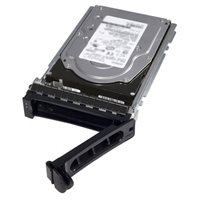 Dell 2TB Near-Line SAS 6Gbps 7.2k 3.5" HD Hot Plug Fully Assemble
1 × AED2,579.00
Dell 2TB Near-Line SAS 6Gbps 7.2k 3.5" HD Hot Plug Fully Assemble
1 × AED2,579.00 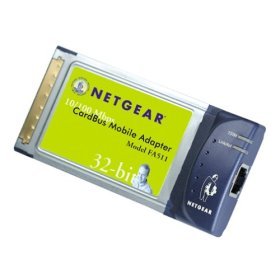 Netgear 10/100 Fast Laptop Card
1 × AED78.00
Netgear 10/100 Fast Laptop Card
1 × AED78.00 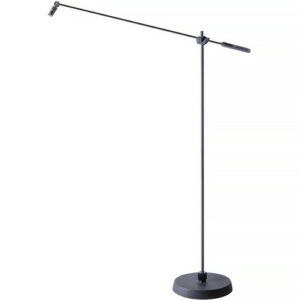 Schoeps RC Violin Microphone Kit
1 × AED13,599.00
Schoeps RC Violin Microphone Kit
1 × AED13,599.00  D-Link DES-1226G Web Smart 24Port 10/100 Switch, 2 Combo Gigabit
1 × AED750.00
D-Link DES-1226G Web Smart 24Port 10/100 Switch, 2 Combo Gigabit
1 × AED750.00  Lab.Gruppen E12:2 1200W E-Series Installation Amplifier with 2 Flexible Output Channels
1 × AED6,999.00
Lab.Gruppen E12:2 1200W E-Series Installation Amplifier with 2 Flexible Output Channels
1 × AED6,999.00  04 3550600
04 3550600 052 7036860
052 7036860

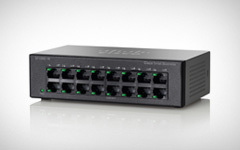
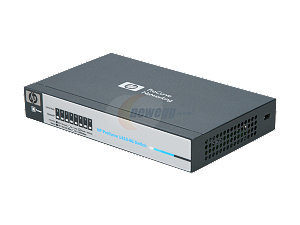

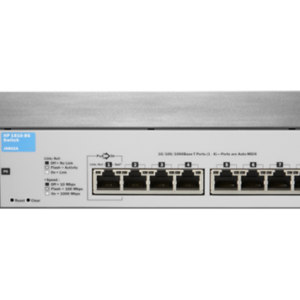

There are no reviews yet.